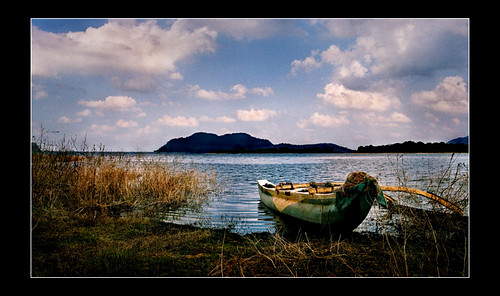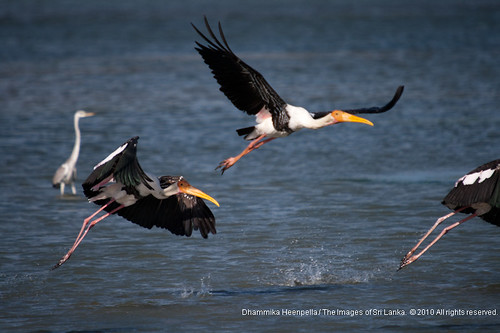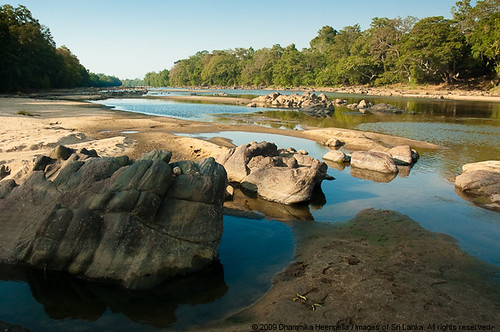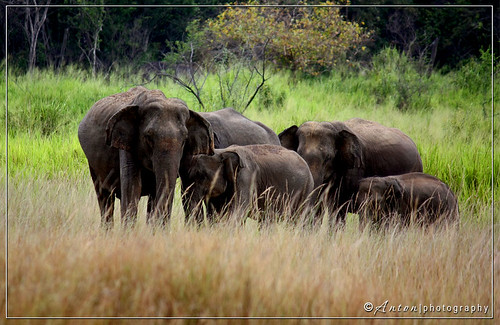When you hear the words Safari, one would automatically think Africa, more specifically Kenya or South Africa. Sri Lanka just happens to also be a biodiversity hot spots. Sri Lanka is one of 25 Biodiversity hot spots around the world.
Don't get me wrong, you wont see any giraffes or lions in Sri Lanka, however what you will see are, Elephants, leopards, bears, hundreds of species of birds, and reptiles and your usual herbivorous animals such as buffalo, deer etc.
Sri Lanka is a bird watchers paradise, with a large number of nature reserves dedicated to birds. The island is at various points in the year home to many species of migratory birds too. I will cover this in another post later.
The below map shows the locations of the safari destinations I would recommend, I will look at each of these in brief detail in this article.
Safari in Southern Sri Lanka
Yala National Park

Yala National park is the most popular safari destination in Sri Lanka, it is frequented by many thousands of both local and international tourist.

Yala National Park does have a lot of wild life, and is the best place in the world to see leopards, and this fact has been in recent times been well covered on media and on documentaries.
I personally think that Yala is very crowded due to its popularity and you do encounter traffic jams in some instances inside the park.
There are a few more national parks around Yala, which are the other blocks of Yala National Park, Bundala and Kumana Nature Reserves. The other blocks of the Yala National park are less congested and are generally unspoilt, there are tours that you can arrange to visit these regions too.
For more information on Yala National Park visit my article here - http://www.kancando.com/2013/05/yala-national-park-sri-lanka.html
Bundala and Kumana National Parks
Bundala and Kumana are mainly for the bird spotters, these two nature reserves are full of local and migratory birds, including many native bird species.
Bundala National Park
Bundala is located within close proximity to Yala National Park in the deep south of Sri Lanka. It is probably most famous for bird watching, and is situated on the coast line, within a short distance of Kirinda. Bundala consists of mainly of dry thorny scrub lands, marshes and four lagoon areas. Although it is mainly a birding location, it does have a few Elephants and other mammals such as deer, boar and water buffalo.
It is believed that almost all species of water bird found in Sri Lanka visit the park. The park has around 200 species of birds of which 58 species are migratory birds. During September and March thousands of migratory birds visit Bundala National Park, one of the more famous visitors are flamingoes.
Best time to visit Bundala National Park is between the months of September to March, this is when migratory birds arrive at the park.
Sea Turtles often visit the coast lines of the park to lay eggs, and can be seen during the evening. This is true for four out of Sri Lanka 's five sea turtle species. The park is also home to both species of crocodiles found in Sri Lanka.
Kumana National Park
Kumana National park is also located within close proximity to Yala National Park. The park has some great off road tracks that make a fun filled ride, getting stuck in the mud is all part of the fun here.
Kumana is home to over 250 species of birds, just like Bundala, Kumana is a Bird Watching hot spot. Previously known as Yala East, Kumana covers an area of 18,150 hectares. The best time for bird watchers to vist Kumana National Park is between the months of April–July when tens of thousands of birds migrate to the swamp area annually. Although Kumana is predominantly a bird watching destination, it also has a few mammals such as Elephants, Buffalo and Leopards.
Udawalawe National Park
Not too far from Yala is Udawalawe National Park, this is probably the best place in Sri Lanka to see elephants, during my visits to Yala, I did not come across many elephants. Udawalawe is home to over 600 elephants, so you are in for a treat if you are an elephant fan. I will cover Udawalawe national park in more detail in a separate post.
Summary
Bundala, Kumana, Udawalawe and Yala are all situated in the south of Sri Lanka. If you are planning to visit any of these destinations the best point to base one self would be Hambantota as it is some what of a midway point between all of these. However if you are only planning on visiting Yala, Bundala or Kumana, then the best point make camp would be Tissa, or if you are a beach lover there are some lovely beaches and scuba diving spots around Kirinda, which is on the door step of all three national parks.Arranging tours to the national parks are easy, I have never actually had to book far in advance, every hotel in the deep south have affiliations to safari organisers that they trust. However if you are wanting to book these in advance then here are some links to a few organisers that I can recommend.
Safari in Eastern Sri Lanka
The eastern part of the country is probably more famous for the pristine coast line, and unspoilt beaches and for part of the year surfing spots such as Arugam Bay.
What is probably less visited are the National Parks in the region, such as Mineriya, Maduru Oya, and Wasgamuawa.

Wasgamuwa National Park is known for two famous inhabitants the Sri Lankan Elephant and the Sloth Black Bear, this said it is also home to some 23 mamal species and over 140 species of birds. Wasgamuwa National Parks name also originates from the words in Sinhalese that translate to Bear Woods.
The national park is bordered by three rivers, and one of these is Sri Lankas longest river, the Mahawali.
Though Wasgamuwa is known for the Sloth Bear, the actual population of bears have declined in recent times, and given their shy nature you are very difficult to spot, that said you are more likely to see them here than in other parks.

During my trip to Wasgamuwa some years back we encountered many a heard of elephants, and other animals, I was not lucky to see a sloth bear. Wasgamuwa National park is also steeped in ancient history, the park is located on the battle grounds of a very famous war that took place in the 2nd century BC.
The best time of the year to visit wasgamuwa national park is between the months of November and May. Wasgamuwa National Park is located in one of the dry zones. Vegetation in the park is mainly dry-zone evergreen forest. There is also a 1,700 year-old tamarind tree located in Wasgamuwa National Park.
The park experiences its annual monsoon rains between October and January, while the months of July to September are the dry months. Wasgamuwa National park is open to visitors from 6.00 a.m. to 6.00 p.m all year round.
Mineriya National Park is located within close proximity to the city of Polonnaruwa. It is perhaps most well known for the Elephant migration that takes place there once a year. When over 400 elephants gather here from various parts of the country
Wasgamuwa National Park

Wasgamuwa National Park is known for two famous inhabitants the Sri Lankan Elephant and the Sloth Black Bear, this said it is also home to some 23 mamal species and over 140 species of birds. Wasgamuwa National Parks name also originates from the words in Sinhalese that translate to Bear Woods.
The national park is bordered by three rivers, and one of these is Sri Lankas longest river, the Mahawali.
Though Wasgamuwa is known for the Sloth Bear, the actual population of bears have declined in recent times, and given their shy nature you are very difficult to spot, that said you are more likely to see them here than in other parks.

During my trip to Wasgamuwa some years back we encountered many a heard of elephants, and other animals, I was not lucky to see a sloth bear. Wasgamuwa National park is also steeped in ancient history, the park is located on the battle grounds of a very famous war that took place in the 2nd century BC.
The best time of the year to visit wasgamuwa national park is between the months of November and May. Wasgamuwa National Park is located in one of the dry zones. Vegetation in the park is mainly dry-zone evergreen forest. There is also a 1,700 year-old tamarind tree located in Wasgamuwa National Park.
The park experiences its annual monsoon rains between October and January, while the months of July to September are the dry months. Wasgamuwa National park is open to visitors from 6.00 a.m. to 6.00 p.m all year round.
Mineriya National Park
Mineriya National Park is located within close proximity to the city of Polonnaruwa. It is perhaps most well known for the Elephant migration that takes place there once a year. When over 400 elephants gather here from various parts of the country
The Elephant Gathering in Minneriya is the largest seasonally recurring concentration of wild elephants found in the world. Though its fame lies in Elephants, Minneriya National Park is also home to Sri Lankan Leopards and Sloth Bears.
At the heart of the National Park is the vast ancient Minneriya Rainwater Reservoir that irrigates the considerable area of the district of Polonnaruwa. The best time of the year to visit Minneriya National Park is between August and September each year. Video
Maduru Oya National Park
Maduru Oya National Park is home to some 200 elephants, and a community оf the indigenous ethnic group оf Sri Lanka lives within the park boundary іn Henanigala.
The park is unspoilt natural habitat created for elephants, its most prominent feature is the 8km long range оf rocky mountains оf the south-west оf the park, further more 15% оf the land area is covered with water features, which include five reservoirs; Maduru Oya, Ulhitiya, Ratkinda, NDK, аnd Henanigala reservoirs аnd tributaries оf the Mahaweli аnd Maduru Oya rivers.

The park also has some interesting archaeological sites, among these are ancient sluice оn the old ruptured earthen bund оf the Maduru Oya. The sluice made up оf stone slabs аnd bricks, іs аbоut 30ft high, 30ft wide аnd 219ft long. The upper sluice wаs built іn twо phases, the fіrst оf whіch dates tо before the 6th century BC. The lower sluice іs believed tо be older thаn that. There are also ruins оf shrines, temples, dagobas, statues, аnd hermitages. These are found in the following areas of the park,Henanigala, Kudawila, Gurukumbura, Ulketangoda, аnd Werapokuna. These ancient structures belong tо various periods оf Sri Lankan history.

Safari in Western Sri Lanka
Just like the eastern coast the western coast line is also home to a lot of beaches (not nearly as good as those on the eastern coast I must say). It is also home to Sri Lanka's largest national park, Wilpattu National park which is on the North Western coast line.
Wilpattu National park
Wilpattu is also home to the famous Sri Lankan leopard, the Sloth Black Bear and Elephants. The national park is located on the north western coast line between the towns of Puttalam and Anuradhapura. It is easily accessible from both Anuradhapura and Puttalam.
Wilpattu national park is largest and oldest National Park in Sri Lanka. It was closed for many years due to the Sri Lankan Civil War, however with the end of the war in 2009, the park has been re-opened to the public.
The best time to visit Wilpattu National Park is during the months of February and October. Wilpattu National Park’s varying natural habitats; coastal belt, natural lakes, rocky outcrops, scrublands, open grasslands and dense forest provide for numerous species of animals. It is home to some 31 mammal species.
Wilpattu National Park and its surroundings have a history that dates back to the arrival of Prince Vijaya in Sri Lanka in 543 BC. The landing beach of prince Vijaya is believed to be the area today known as Kudriamali. Kali Villu is said to be location of the palace of Kuveni, a princess of a native tribe in the island.
For more information on Wilpattu National Park visit my article here - http://www.kancando.com/2013/09/wilpattu-national-park.html






























